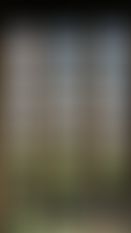The Evangelical Reformed Church of Kaunas was built in 1937 according to the project of Karolis Reisonas. However, this was not the first church project. Vaclovas Michnevičius, the most prolific creator of historicist sacred architecture in Lithuania, designed a neo-Gothic temple on a plot of land purchased by the Reformed community in E. Ožeškienės Street in 1934. Although the design of the building reflects the traditional neo-Gothic elements favoured by the architect, the layout of the main hall on the second and third floors, with the ground floor reserved for administrative and even residential functions, is a unique solution. The church is designed as a single-nave, T-shaped plan. The façade was to be asymmetrical, with a gracefully shaped two-tiered tower. Although the project was approved by the city's building commission, the neo-Gothic church was probably not in keeping with the image of a 'modern city' that was considered important for the then provisional capital. After a reconsideration by the building council, attended by architectural and artistic experts, it was decided that "the project as currently presented should not be allowed to be built", and it was noted that permission should only be granted after "designing the surrounding area in harmony with the church project".
Therefore, it was decided to entrust the design of the Evangelical Reformed Church to K. Reisonas, a Latvian architect who had settled in Lithuania. He was the chief engineer of Kaunas at the time and had already designed the Resurrection Church. The new design retained some planning solutions, including the hall's layout on the second and third floors. Still, stylistically the new design reflected the modernist tendencies of the time. This was also noted by the building council, who decided to approve the new church design "since the modified design presented, with a flat roof and smoother shapes, is more suited to the site". Although the composition of the building is typical of traditional church architecture, its laconic, generalised forms make it one of the few examples of interwar modernist sacred architecture. Furthermore, the narrow vertical windows not only convey the spirit of 1930s Kaunas architecture but also give the relatively small volume of the church a visually enhancing impression of verve. Since the church designed on E. Ožeškienės 41 and the Resurrection Church have many similar elements, these two churches are nicknamed sisters.
The main space of the sanctuary was dedicated to the second floor. The arched window at the front of this space adds to the splendour of the church. The place of worship is surrounded on both sides by a series of vertical windows, through which the light streams in and out, giving the space a cosy and warm feel.
The exterior was completed in 1938, but the interior took another two years to complete. Due to the onset of the Soviet occupation, no religious services took place in the newly built church. After the war, the upper part of the tower was demolished, and the nationalised church was turned into a warehouse for tobacco and beer factories. As the iconography shows, the building was slightly reconstructed, and additional windows were cut out for the purpose of adapting it to industrial premises. Later, it was used as a canteen and gym for the special school of the Interior Ministry of Kaunas. It was only in 1992 that the church was allowed to hold services, but even then, it was still not part of the Evangelical Reformed Community, and services were held there as a "guest". This lasted until 2019 when the Evangelical Reformed Church building was officially handed over to the Evangelical Reformed Community. It is still possible to see the marks of the basketball hall in the main hall of the church. The restoration of the church, which is planned for the near future, will likely bring back the well-deserved beauty of one of the street's symbols.












































